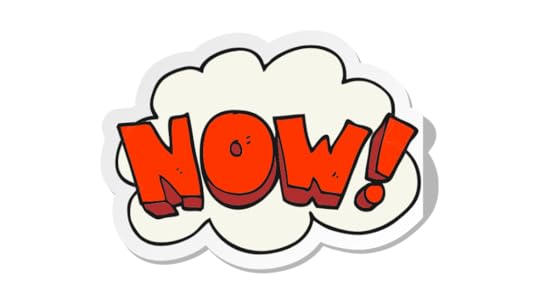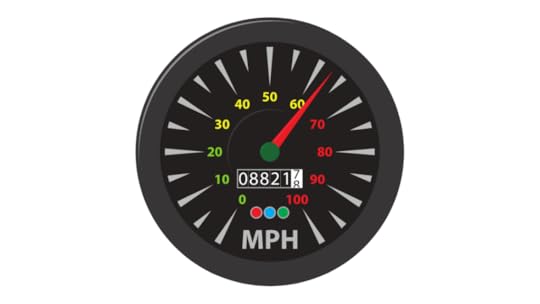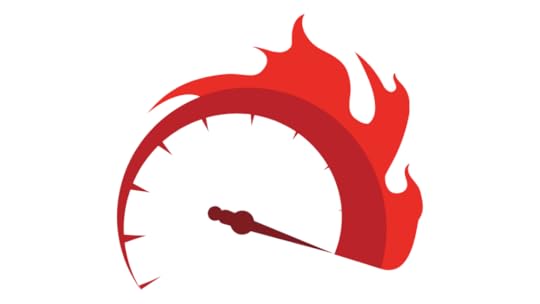12 Steps to Transform Your Sales Responsiveness
Now” when Selling

In sales, your
competitors are not your enemy. Time is your enemy. Time is the most limiting
aspect of your sales efforts. You need time to develop new prospects. You need
to get time from your crazy busy prospects to sell to them. And you need time
to help your qualified prospects move through their buying process to a
decision.
Customers today look to
sellers to help them gather the data and information they need make sound
decisions quickly and at a low cost. The successful salesperson anticipates the
information requirements of the customer and uses responsiveness to help the
customer make an informed purchase decision with the least investment of time
possible. The faster and more completely you can be responsive to the customer,
the less able your competitors will be to compete.
The way to stay ahead of
the customer is to adopt the mindset that you will Do Everything Now: become
more responsive and dramatically improve the service you provide your
customers, in order to win more orders in less time.
Don’t wait to get
started. It’s not enough to say you want to Do Everything Now. You have to back
up your talk with action. The way to do that is to set measurable targets
(metrics) for all of your sales processes, and continually manage your
processes to outperform them.
Setting Speed Targets

Zero-Time Selling
requires that your interactions with the customer have MILT—Maximum Impact in
the Least Time. Establish speed targets for core sales activities. It may take
you months or more to reach these goals. That is perfectly fine, as long as you
make continuous progress. Here are some good starting speed targets to aim for.
And what if you reach these goals? Keep going! Go even faster!
1. Logging and distributing an in-bound lead:
Within 30 minutes of the
time a lead is received, regardless of its source, it should be logged in your
CRM system and distributed to your salespeople. If they are leads that came in
overnight, they should be logged and distributed within 30 minutes of the start
of the business day.
2. Responding to a lead:
All leads should be
called within 30 minutes of being received by the salesperson.
3. Responding to questions:
Responding to a customer
service call and addressing a customer’s problem should happen in 30 minutes or
less. This doesn’t necessarily mean that the customer’s problem is solved in 30
minutes. It does mean that each customer receives a personal response in 30
minutes, not an automated acknowledgment from a CRM system. All calls must be
answered by a live technical- or customer-support person. If a question cannot
be answered during the first call with a customer, then the follow-up response
with complete information must be made to the customer within one hour of the
end of the call.
4. Delivering a quote:
All quotes should be
delivered to the prospect/customer on the same day that they were requested.
Use a proposal preparation app or re-use templates of previous quotes and
proposals to prepare quotes rapidly.
5. Customer Documentation.
All required CRM documentation
of customer interactions must be entered before the end of the business day.
All account activity is entered, including emails, documentation of phone calls
and sales calls, customer-support activity, quotes, and proposals. Having
immediate access to the latest up-to-date information can accelerate your
accounting planning.
6. Clearing customer messages.
There are multiple
avenues for hearing from your customers. Irrespective of the source, all
messages from customers must be cleared by the end of each business day.
Emails, voicemails, phone messages, and text messages must all be cleared the
same day they are received. It’s not often that a customer sends an email just
to say “Hi.” You have to assume that any customer who contacts you wants information.
Provide the information they need right now. Don’t let it sit for a day or
more. Don’t inject unnecessary delay into the customer’s buying cycle.
Hitting Speed Targets

Once you’ve established
speed targets, how can you make sure you hit them? Here are six proven
recommendations:
1. Clearly communicate speed expectations to your team.
Make certain that all
sales and service team member understand your expectations with regard to
responsiveness (content + speed) and MILT in all of their interactions with
prospects and customers. This has to be done upfront. The commitment to
responsiveness and MILT, what I call Zero-Time Selling, starts at the top.
2. Frequently check individual progress against assigned
target metrics.
Implementing routine
checks of key metrics in daily huddles or sales meetings will quickly reveal
whether your “Do Everything Now” processes are on target, and if they’re not,
will highlight the reasons they’re behind schedule.
Remember that this is an
iterative process. Choose the processes you want to accelerate, establish your
speed targets, measure the results, tweak the process, measure the results
again, and keep adjusting the process and measuring the results until you
achieve your targets. Then, define a new, more aggressive target, and continue
with the process. You continually want to improve your processes as your sales
results improve. It’s work, but in the end you’ll find that it’s very
profitable.
3. Manage your sales opportunities by focusing on responsiveness
and MILT.
There are several things
you can do in this regard. Review every sales opportunity with the goal of
maximizing responsiveness and MILT. When you review a salesperson’s pipeline of
sales opportunities, he or she should know the specific actions they are going
to take to provide maximum value to the customer on the next sales interaction.
In addition, review the CRM records of prospects to review the actions that
have already been taken with a sales prospect to spot any requirements or opportunities
that may have been missed. Discuss what the salesperson could have done to be
more responsive and use those as teaching examples.
4. Monitor assigned follow-ups in your CRM system.
As a manager, you need
to stay on top of the quantity and timing of each salesperson’s follow-ups and
assigned tasks. If a quick check shows that Danni has a backlog of 50
follow-ups that are overdue, then clearly she is struggling with her
responsiveness. Customers want information, and she isn’t getting them the
answers they need, which compromises your competitive position.
5. Coach salespeople to eliminate trivial and
time-wasting sales calls.
The amount of time you insert unnecessarily between steps in the sales process with a prospect is destructive to your selling efforts. That time is called an “Indecent Interval”: injecting unnecessary delay into the customer’s buying cycle. Doing this opens the door for the competition to take the business away.

The “Wallet Pretext” is
a venerable technique a salesperson uses to create an artificial reason to
contact the customer once more. Anyone who has ever dated has used the “Wallet
Pretext.” You really enjoyed your blind date and hated to call it a night. You
couldn’t wait to see her again, but you wanted to make sure to wait an
appropriate amount of time before calling her, so you didn’t appear too
anxious. So you used the “Wallet Pretext”: “Hey, I am sorry for bothering you,
but I can’t find my wallet today. I think I might have dropped it at your
apartment last night. Would you mind if I stopped by to look for it?”
In sales, the “Wallet
Pretext” is used all the time by salespeople who don’t understand that part of
their job is to create value for their customers. Too many salespeople are in
the habit of calling customers “just to touch base.” Customers hate these time
wasters. If you aren’t responding to a specific request, think carefully before
contacting a prospect. Will the call create value for the customer? If not,
don’t pick up the phone.
The “Wallet Pretext” and
the “Indecent Interval” are often found together in the bag of techniques
salespeople incorporate into their daily routine. They are bad habits that need
to be stamped out. The “Indecent Interval” especially is pervasive in selling.
Even in this era of email, voicemail, smartphones, chat, and social media, the
indecent interval exists. It is a creation of salespeople. It is not the
customer who continues to use it, but the salesperson who lacks confidence in
the value he or she is providing to the customer.
6. Continually review and analyze how your sales process
performance stacks up against your target metrics.
Review progress toward
achieving your target metrics. Someone within your organization should be
assigned to calculate performance against the target. An administrative staff
member can develop a spreadsheet or other reporting structure to track
performance. Graph these for reporting purposes in meetings. Analyze metrics
weekly. Reporting on your sales process statistics should be a part of every
weekly sales meeting. Performance against these metrics should also be reviewed
by executive staff.
Remember: prospects
these days are estimated to have moved 50%-75% through their buying process
before they first contact you. At that point, they have fewer questions that
need to be answered before they can make a decision and their timing is urgent
(given that they started their buying process well before you first engaged
with them.) Make certain that your salespeople and sales processes are prepared
to Do Everything Now and you will have the inside track on winning that
business.
The post 12 Steps to Transform Your Sales Responsiveness appeared first on Andy Paul.
Andy Paul's Blog
- Andy Paul's profile
- 4 followers



